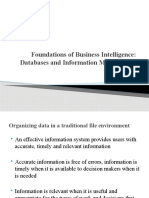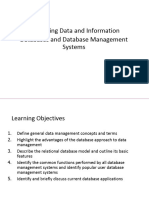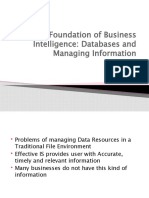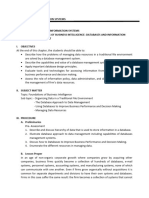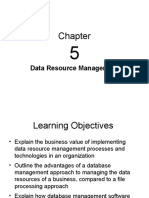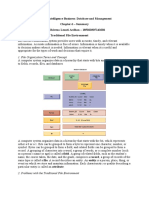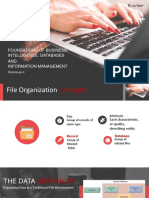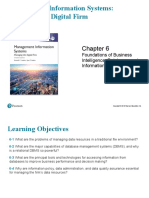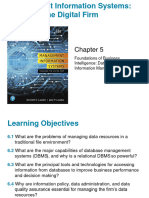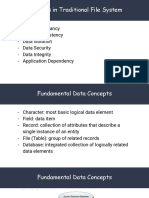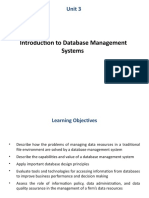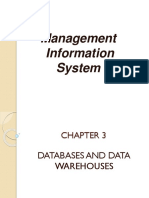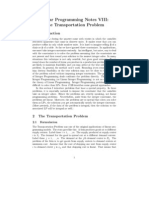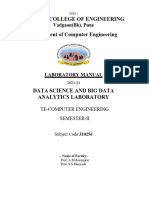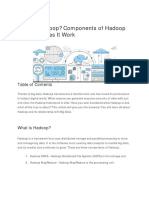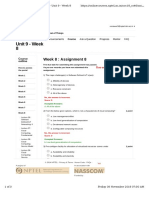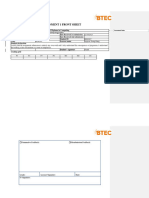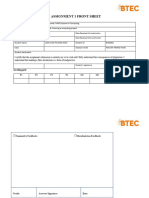0% found this document useful (0 votes)
87 views34 pagesLecture 8-Is Infrastructure DBMS
This document discusses database management systems and issues. It begins by explaining how data is organized hierarchically from bits to files. It then discusses issues with traditional data organization and how database management systems address these issues by centralizing data management. The document primarily focuses on relational database management systems, explaining how data is organized into tables and related through primary and foreign keys. It also discusses database design considerations and tools for business intelligence like online analytical processing and data mining that analyze stored data.
Uploaded by
Debarshee MukherjeeCopyright
© © All Rights Reserved
We take content rights seriously. If you suspect this is your content, claim it here.
Available Formats
Download as PDF, TXT or read online on Scribd
0% found this document useful (0 votes)
87 views34 pagesLecture 8-Is Infrastructure DBMS
This document discusses database management systems and issues. It begins by explaining how data is organized hierarchically from bits to files. It then discusses issues with traditional data organization and how database management systems address these issues by centralizing data management. The document primarily focuses on relational database management systems, explaining how data is organized into tables and related through primary and foreign keys. It also discusses database design considerations and tools for business intelligence like online analytical processing and data mining that analyze stored data.
Uploaded by
Debarshee MukherjeeCopyright
© © All Rights Reserved
We take content rights seriously. If you suspect this is your content, claim it here.
Available Formats
Download as PDF, TXT or read online on Scribd
/ 34





